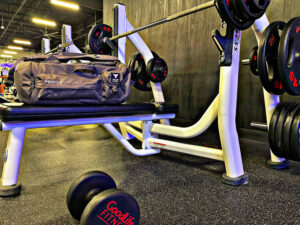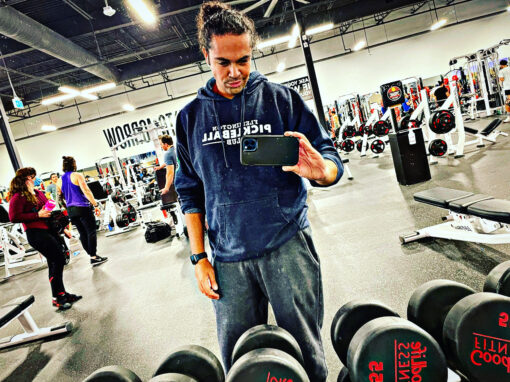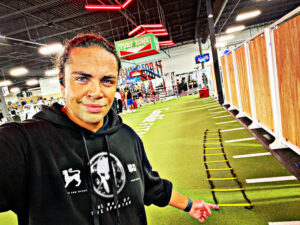
2023 Planning: How to build your program to level up
20 tournaments, over 40 events, many fantastic Ws… and more tough losses. As my 2022 pickleball season comes to a close, I’m looking back with gratitude on an exciting, challenging, and (most importantly) educational tourney experience.
This was my first (almost) completely healthy year on the pickleball tournament circuit since my full Achilles rupture in my first year of play in 2020, and the recovery and retraining year that was 2021. The focus in 2022: tournament exposure
· As many tournaments as possible
· As many events as possible
· In as many places as possible
with the objective being to accelerate by getting access to as many varied styles of play as possible while also building in-game and beyond-game strategies to handle the many pressures of the tournament environment.
This year, I also pushed myself athletically. Coming off of injury, I began to compete at the 3.5 level (around the average of most recreational play). My limited mobility, risk of re-injury, and smaller network of prospective partners made me cautious to compete at a level above. In 2022, I pushed up to compete at the 4.5 (~2 levels below pro) and the Open level (the highest available at many tournaments, particularly in Canada).
All in all, 2022 has been successful. I’ve built credibility in the pickleball community, made new friends across North America, developed new partnerships with individuals and organizations (like RockTape), and reached the podium in a number of successful tournaments along the way.
That said, what I haven’t done is achieved the Ws I’ve been looking for. Beyond 4.0, the podium is something that has still been out of reach.
For many in the game, the next step feels simple — just keep putting in the work; drill more, play less rec, try to develop a dedicated partnership so that you can build your game together (an approach that has long been considered to be the most proven path to success in doubles). But that next step doesn’t seem deep enough.

Looking forward, to 2023, there are a few factors we need to acknowledge:
· I’m getting older, as are many others who have come into the sport during its explosive growth in the last couple of years; if we look across at tennis, 32 is the age that many pros are thinking about retirement (average retirement age is around 27)
· The sport is getting younger — with more players beginning to get into and even specialize in pickleball in their youth, similar to what we see on the tennis circuit
· There is a growing influx of crossover and transfer players from D1 and pro-tennis into pickleball (the recent PPA Bubly Team Championships in Las Vegas featured names such as John Isner, Jack Sock, Donald Young, and Sam Querrey — Querrey himself is competing in the next season of Major League Pickleball, along with Swedish pro-tennis player Andreas Siljestrom)
· The population of pickleball players is still seeing a boom
This means that breaking the podium and taking titles at 5.0 and pro is only going to get more challenging. It also means that for many amateur athletes (like myself) gaining ground doesn’t mean keeping steady — it means levelling up training based on a strategic assessment of what the new field of players looks like, how those at the top of their game are training to win, and the resources at your disposal.
For me, that means:
· A 3-month hiatus from tournament play to focus on building up my athletic foundation
· A formal fitness plan (for the first time in 10+ years) hyper-focusing on leg strength, speed, and agility training
· Becoming a singles-play specialist — to help raise my athleticism, build more range on the court, and to set me up for success when I don’t have a partner I’ve trained with
· A shift to an 85/15 split of drilling vs. playing recreational games
· A committed tour schedule; paced strategically to allow time for rest and training between tournament events
· From an active relief standpoint, I’ve also taken on x3 Spartan Races in 2023 to give me an athletic focus beyond pickleball to keep my mindset fresh and excited
For you, in your sport: that could mean any number of adjustments to your game and training; to begin building out what that is, I’d recommend answering a few questions —
1. How has your sport changed, on a game level — has the strategy changed? Are there rule addendums that limit or open up opportunities differently? Has how players choose to play shifted in a way that’s helping them win more often?
2. How has the population of your sport changed — is there an influx of more players from new places, a different age group? Are the players you’re competing against getting older or younger (compared to you)? Has the fitness level or type of fitness in
The sport changed in a way that’s growing?
3. What are the top players and coaches building to stay at the top — are they focused on physicality? Strategy shifts and mindset/mentality? Precision and economy of movement? Many athletes and professional trainers who work with athletes are open enough about elements of their methodology that you can build a program from their available resources alone… and then connect with the ones whose values resonate with your own and whom you may want to build with
Point #3 is critical. Social media’s democratization of information has made it wholly possible to learn organically from how performance training is changing at the highest levels of your sport. It’s also a simple way to qualify potential professionals you’d like to work with on the frontend.
For myself, in pickleball, my top 3 resources from social media are: · Drach Performance · Pierre’s Elite Performance · Tyson McGuffin
The last question you need to ask yourself is what are my resources (i.e. what do I have? what do I need? what can I get?). That understanding is critical because our world is rarely perfect, so while it’s worth having an ideal of your optimal training and elevating environment — you also need to be ready to modify and adapt, whether that’s to something like the distance from your house to the gym, the availability of trainers in your area, your annual vacation days, or the funds at your disposal.
Once you’ve put those pieces together, you’re in a good place to build a plan to level up.
Mo waja



